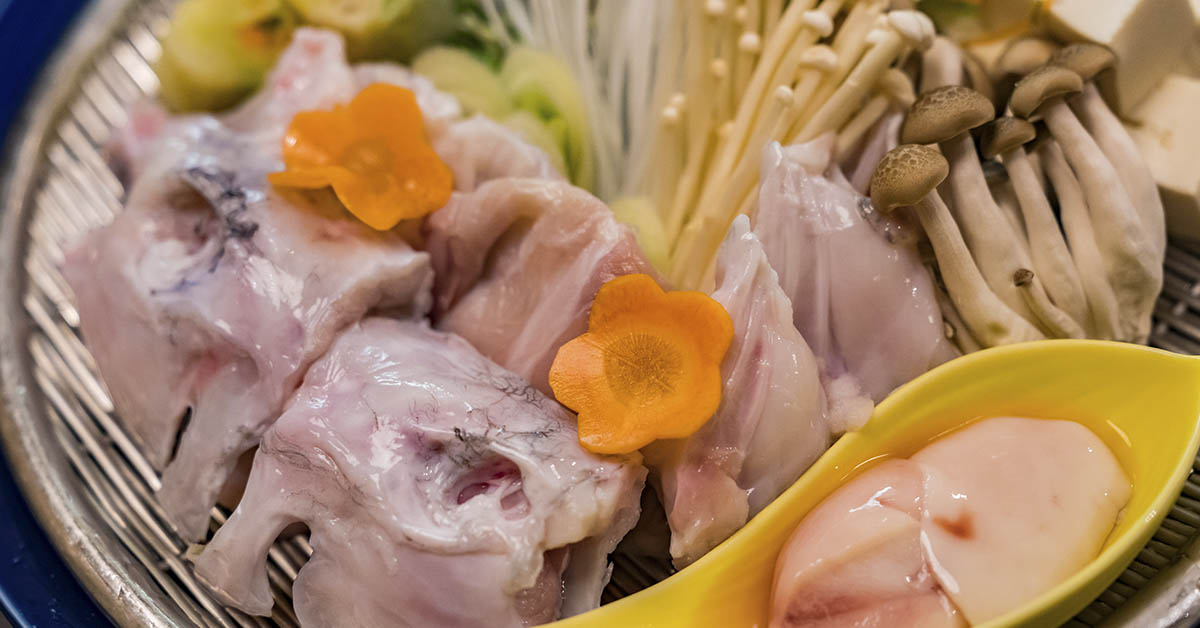Eating food can be a hazardous process. There’s the risk of food poisoning, choking, allergies, intestinal discomfort, heartburn, and all the unpleasant effects of a bad meal — or a really good one. Most people don’t think of food as a dangerous sport, but that’s because they haven’t been looking at the right dishes. In fact, there are foods all over the world that present very unique dining experiences — and potentially fatal ones.
Dangerous Foods From Around the World
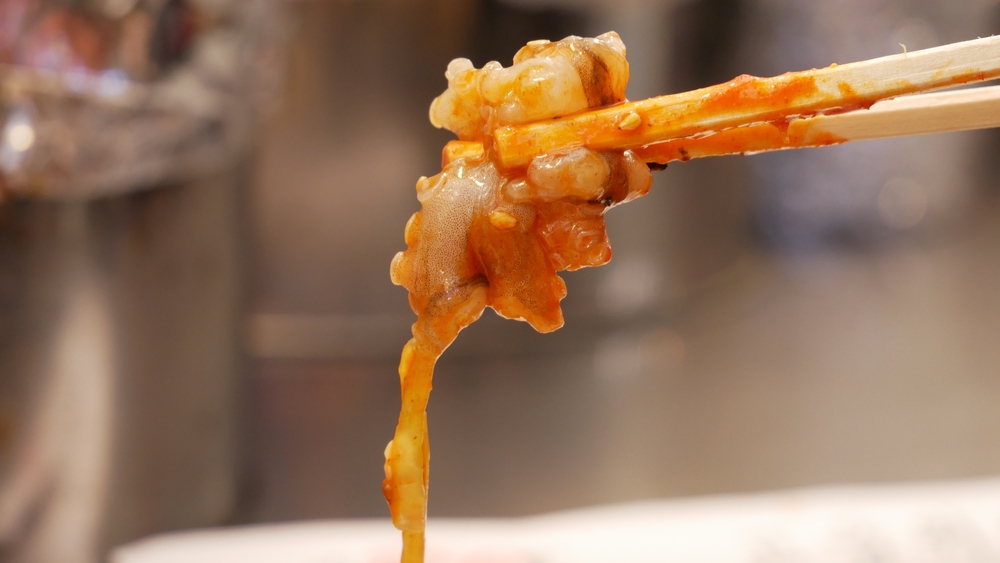
Every culture has its culinary delights, but some dishes come with a side of danger. From the exotic and intriguing to the downright perilous, these foods challenge even the most adventurous eaters. Whether it’s the venomous fugu fish from Japan or the potentially deadly ackee fruit from Jamaica, the world is full of edible hazards. This exploration of dangerous foods from around the globe highlights the risks and the reasons why people continue to savor these thrilling delicacies.
Read More: 11 Anti-Parasitic Foods To Add To Your Diet
Ackee fruit

Ackee is the national fruit of Jamaica, but it can be dangerous to eat. When it’s unripe, ackee contains hypoglycin, a poison that can cause what’s called Jamaican Vomiting Sickness, which can lead to a coma or even death. Fortunately, there’s an easy way to tell if the fruit is ripe. Ackee needs to ripen fully while still on the tree. When this occurs, the seams on the fruit will split open and indicate that it’s ready to be eaten. Never force this fruit open; if it’s closed, it’s still unripe. And only eat the cream-colored pulp, since the black seeds and pink flesh are highly toxic, ripe or not. [1]
Casu marzu
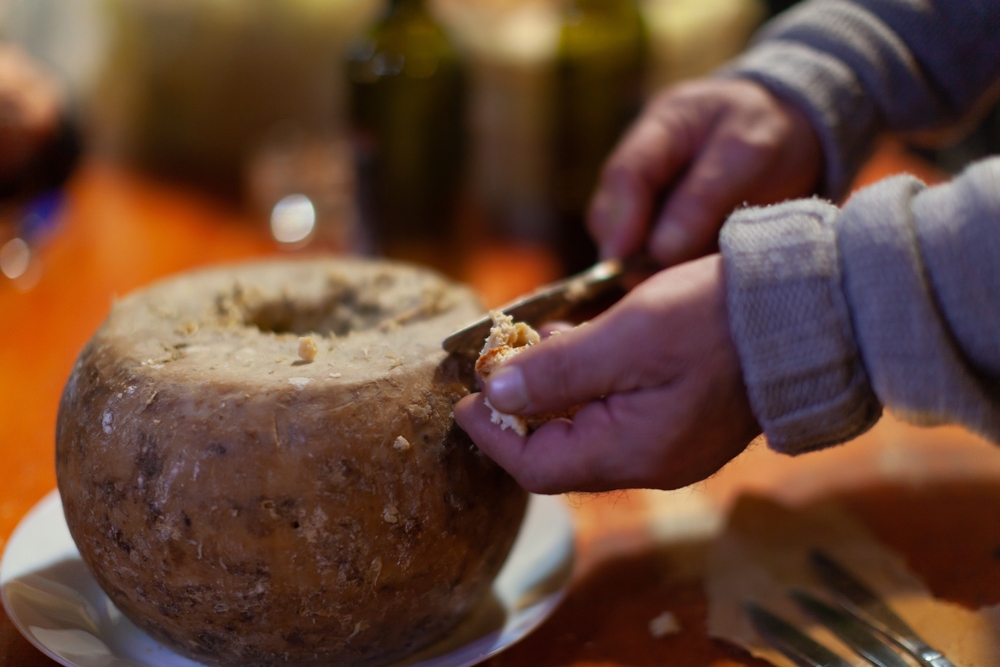
This Sardinian cheese is made with perhaps the most appalling ingredient ever: maggots. That’s right, casu marzu is made by adding maggots to a type of Italian cheese called Pecorino. As it ages, the maggots soften the cheese, so by the time it’s ready to eat, it’s almost liquid-like. People who’ve tried it compare it to gorgonzola, but it’s, unsurprisingly, more distinct. The strong taste comes partially from the insects’ excrement.
While many may turn up their noses as casu marzu, many are willing to try it. But keep in mind, that this is considered one of the most dangerous foods in the world because of its health risks, which is why it’s not easy to find. If the maggots are dead, that usually means the cheese has gone bad (unless it was refrigerated). To eat it fresh, you’ll need to be on guard for maggots that can jump 15 cm into the air. Maggots are not on the EU’s approved food list. [2]
Fugu
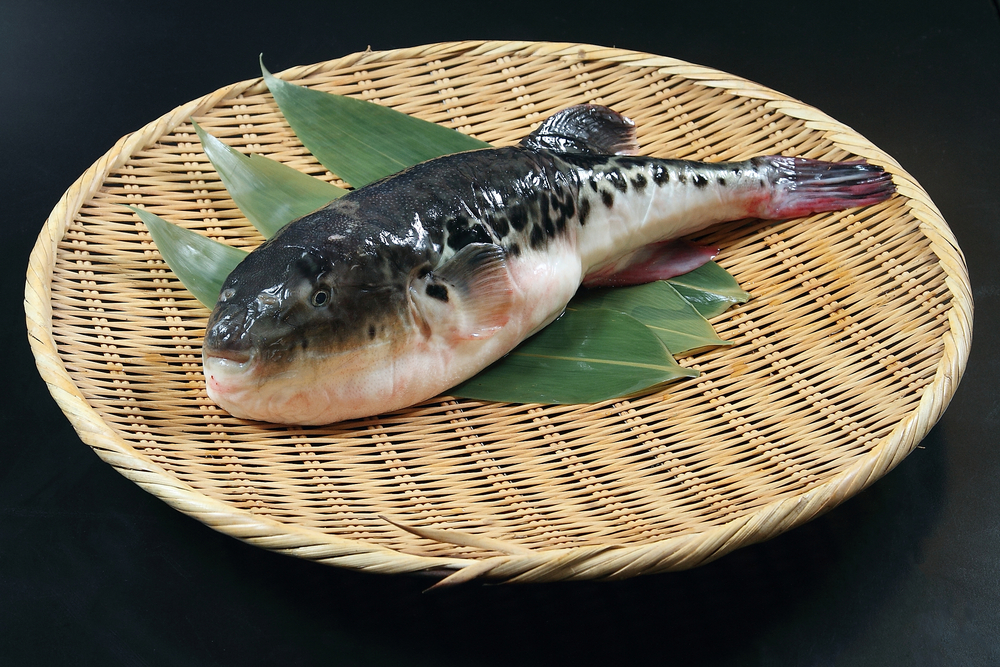
Blowfish are deadly creatures, even more deadly than cyanide. But they are also a delicacy popularly known as fugu in Japan, where it’s usually served in thin, raw slices or in a soup. Chefs who prepare this dish are given rigorous training for years before they are permitted to serve it to customers. Part of this training involves surgically removing all parts containing the poison tetrodotoxin, including the skin, liver, intestines, brain, eyes, and ovaries. A single blowfish has enough poison to kill 30 people, and if a chef makes a mistake, a consumer can suffer motor nerve paralysis and fatal respiratory arrest.
Hákarl
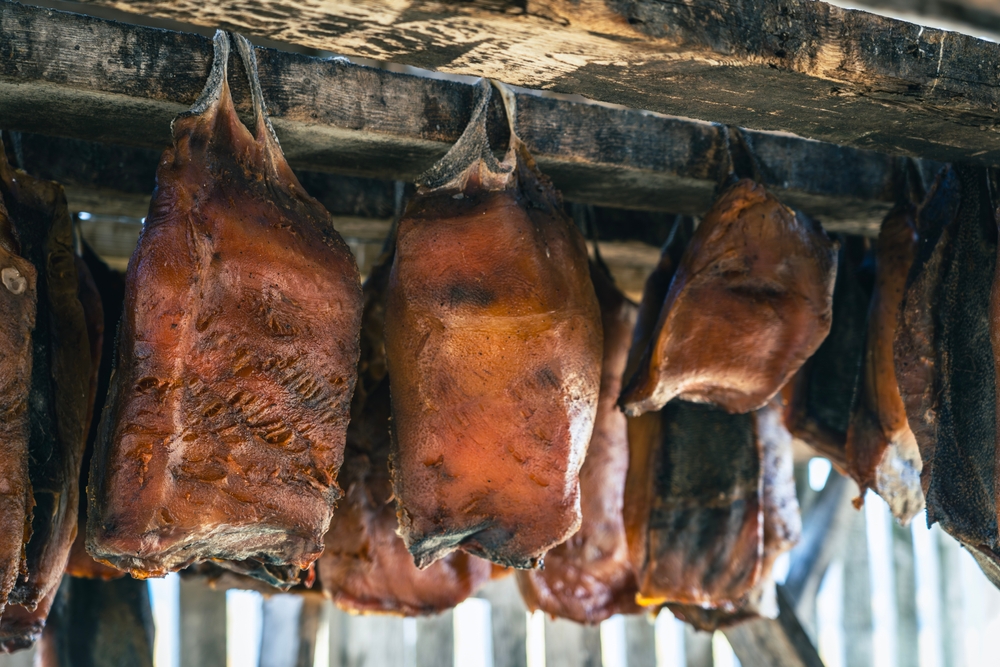
Hákarl is a traditional Icelandic dish made from Greenland shark meat. The meat is cured and dried for three to five months to neutralize the toxins in the shark’s flesh. Greenland sharks contain high levels of urea and trimethylamine because they don’t have a urinary tract, so waste goes through the flesh and skin. This is healthy for the shark since these compounds double as protection from the chilly arctic waters but less healthy for humans. In fact, fresh Greenland shark meat can cause extreme intoxication, neurological issues, intestinal distress, and even death. Even improperly prepared Hákarl can lead to some unpleasant side effects.
Hot dogs
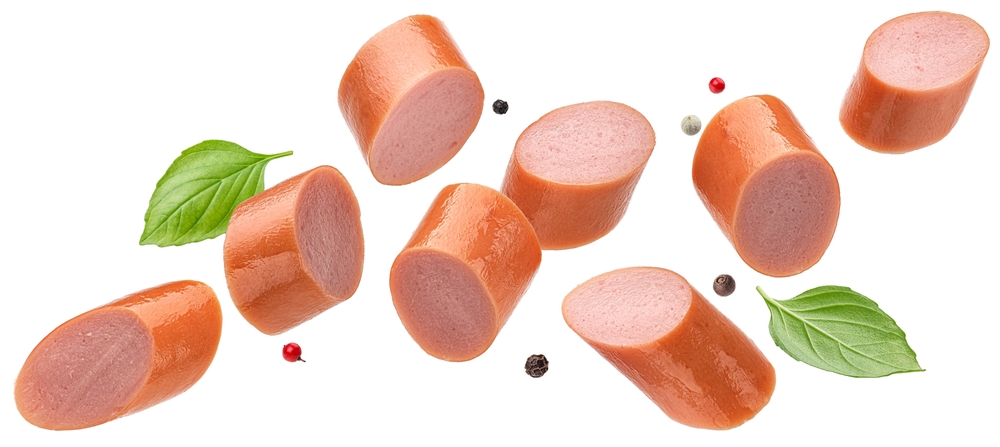
Yes, hot dogs are often full of questionable ingredients, but that’s not why they made this dangerous food list. Pediatricians at Johns Hopkins Children’s Center state that hot dogs cause 17% of food-related choking in children under the age of 3, and therefore, the number one food choking hazard for that age group.
“Every food poses a choking risk in young kids but the hot dog has just the right size and consistency to perfectly block the airway, it’s the perfect plug that doesn’t allow any air to get through,” said Johns Hopkins Children’s pediatrician Nisha Kapadia, M.D. She recommends parents mince or thinly slice hot dogs before serving them to little kids. [3]
Red kidney beans

Beans are full of nutrients and are considered healthy foods. So it must be surprising to find them on this list. But raw red kidney beans contain phytohemagglutinin, a type of lectin that’s difficult for the body to digest. In fact, if consumed, they could cause stomach pain and vomiting. Fortunately, there’s a simple way to prevent this by soaking the beans for at least 12 hours before draining them, rinsing them, then boiling them on high heat for 10 minutes, then simmering them for an hour to make them nice and soft. Or you can buy the canned version and avoid this whole process.
Rhubarb leaves
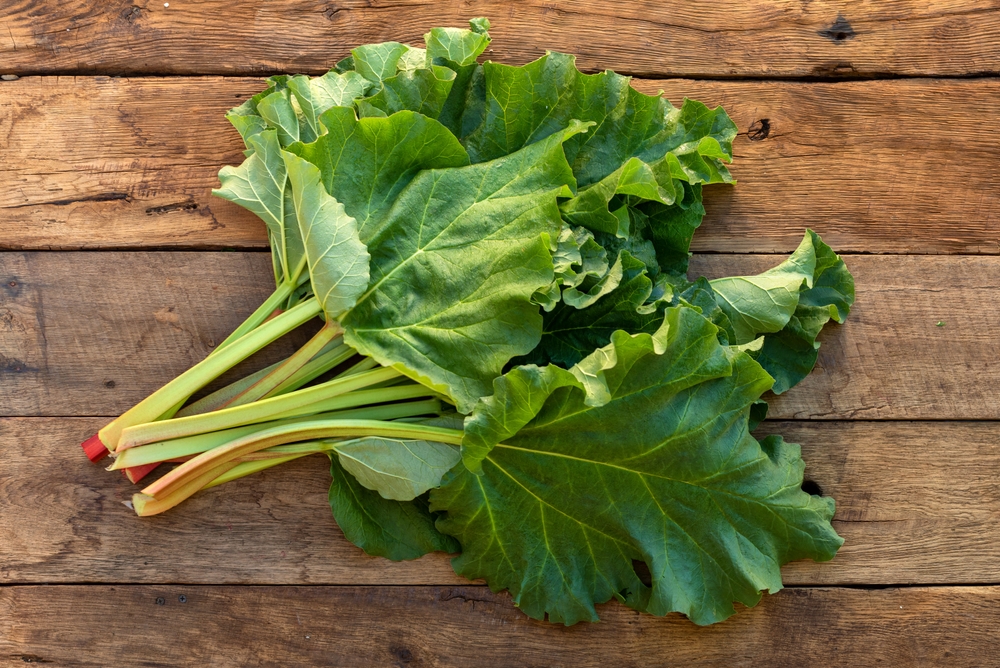
Rhubarb stalks are safe to eat and are a favorite for pies and crumbles. However, the green leaves attached to the reddish stalks contain high amounts of oxalic acid, a poison that could cause nausea and kidney issues if eaten in large quantities. Rhubarb contains approximately 570–1,900 mg of oxalate per 3.5 oz (100g). The leaves are most rich in oxalates comprising 0.5-1.0% of their weight.
Consuming too much oxalate can lead to hyperoxaluria, which is when excess oxalate is excreted in the urine. This can also lead to an accumulation of calcium oxalate crystals in the organs, which can lead to kidney stones. [4]
Sannakji

Sannakji is a Korean dish made from baby octopus tentacles. However, it’s prepared by chopping off the tentacles while the animal is still alive, seasoning them, and serving them immediately. Customers eat this dish while the tentacles are still moving around the plate. This is a dangerous meal because the suction pads on the tentacles retain full functionality, so diners need to chew and swallow before the tentacles suction onto their mouths or throats. If not, the tentacles could stick and cause the diner to choke, an unfortunate occurrence that occurs several times a year. [5]
Read More: 20 Human Foods You May Not Realize Are Poisonous to Your Dog
Sources
- “8 of the World’s Most Dangerous Foods.” Canadian Institute of Food Safety. December 7, 2019
- “What are the most terrifying foods?” BBC.
- “A Dangerously Tasty Treat: The Hot Dog is a Choking Hazard.” Johns Hopkins Medicine.
- “Are Rhubarb Leaves Safe to Eat?” Healthline. March 17, 2020.
- “The Most Dangerous Foods in the World.” Interesting Engineering. Fabienne Lang. April 25, 2021
